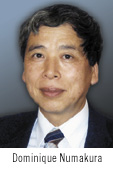
Retooling for higher margin product lines keep many Japanese companies profitable in 2006.
Japan’s Ministry of Economy, Trade and Industry (METI) recently released December’s production data for Japanese printed circuit board manufacturers. The release of these figures completes the production data report for 2006, and industry trends can now be reviewed and analyzed.
PCB industry revenue for December came in weaker than expected at 83.93 billion yen, a 4.5% decline from November. It was the beginning of a two-month losing streak. This decline normally does not begin prior to December due in part to the Christmas buying season. Still, the figure is a 13% increase compared to the same month of 2005. Japanese electronics companies probably recognized shelf inventories were greater than consumer demand. The Japanese government has stated the market is continuously expanding; however, manufacturers are not as confident and employ a more practical and conservative approach to maintain financial stability.
Business for both rigid board and flexible circuit manufacturers have been trending downward since November, and most other related product segments are feeling the pinch. The module substrate segment is the exception. They haven’t experienced any downturn and are enjoying a consistent increase in revenues since last summer. However, the growth rate has slowed down for the past two months – December shipments were almost the same as November.
2006 gross revenue from Japanese PCB manufacturers was 962.26 billion yen, a 15.5% growth from the previous year. However, 2006 volume was 24.94 million meters2, which was zero growth from 2005. Although revenues increased and production decreased, unit prices for circuit boards did not increase. Instead, manufacturers have shifted production to higher-end product lines where margins are higher. During 2006, rigid single-sided boards continuously declined and posted a 15% loss when compared to 2005 figures. Six to eight-layer rigid boards grew 22.7%, single-sided flexible circuits declined 7.7% from the previous year, and double-sided and multilayer products increased revenue by 7.3% compared to the previous year.
Unfortunately the module substrates manufacturers are not very flexible in changing their product lines to alternative ones with higher margins. Rigid substrate manufacturers increased annual shipments by 57% from the previous year, but revenues for other substrates dropped 3.2% from 2005. Business for module substrates depends on customers’ situations, while substrate manufacturers have completely different applications. Rigid substrate customers include semiconductor manufacturers and packaging companies. Conversely, the main markets for other module substrates are mostly driver modules for flat panel displays such as LCD panels.
The Japanese PCB industry posted strong gains during 2006, enjoying double-digit growth compared to the previous year. However, the growth was only realized during the first three quarters; the last quarter of 2006 steadily decreased. This trend could be a clear indicator that 2007 may not be too promising for PCB manufacturers in Japan. Hopefully, it will only last for the first or second quarter. Management teams for related companies must pay attention to market trends and act quickly and decisively to maintain profits in a constantly changing industry.
Headlines
LG Philips LCD will increase the manufacturing capacity of large LCD panels to 110,000 units per month from 90,000 units for 42? and 47? TV by the third quarter of 2007.
Japanese electronic company Hitachi developed the world’s smallest IC chip (50 micron2, 5 micron thick) for IC tag applications. The device can hold 128 bits information.
Fuji Electric has been developing application technologies for bendable solar cells. The devices are built on a thin plastic film using amorphous silicon.
Sharp will increase the manufacturing capacity of its blue color laser diode 200% to half a million units per month for next generation DVDs.
Japanese chemical company Toray developed a new photosensitive polyimide resin with a curing temperature below 200ºC for use in semiconductor device protection.
Showa Denko, another chemical company in Japan, plans to commercialize organic EL panel products. The company will introduce a pilot manufacturing line with 300x300-mm work size at its Chiba Plant.
Equipment manufacturer Hosokawa Micron commercialized a new volume production machine to generate nanoparticles by a vapor phase synthesis process.
Mitsubishi Electric developed a new deep UV laser (213-nanometer wave length) with 10W power for the process of printed circuits and glass substrates.
Fuji Chimera, a Japanese market research firm, released a report regarding the MEMS device market relating to nanomaterials. PCD&M
Dominique Numakura is president of DKN Research; This email address is being protected from spambots. You need JavaScript enabled to view it..














